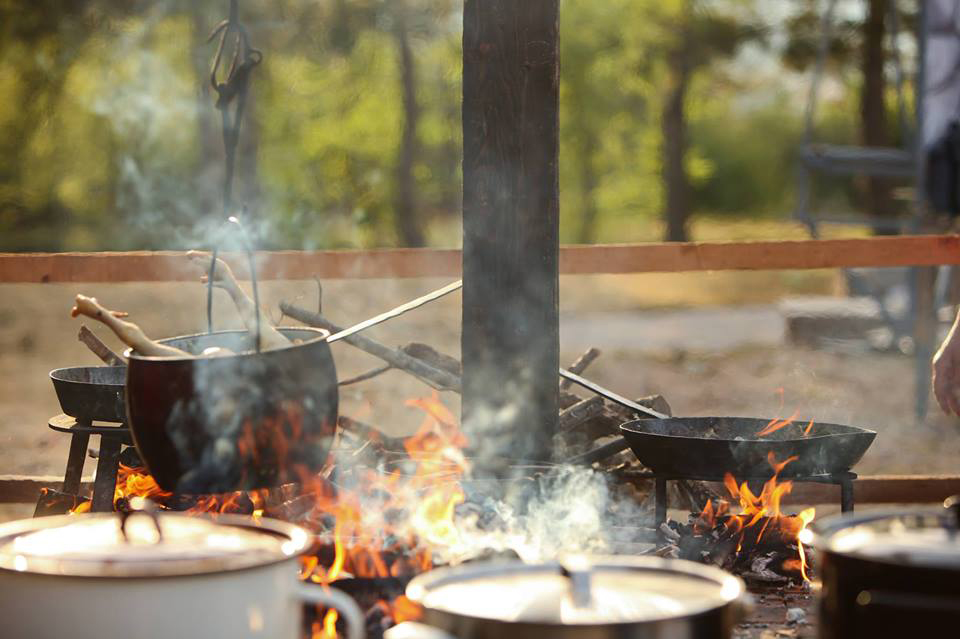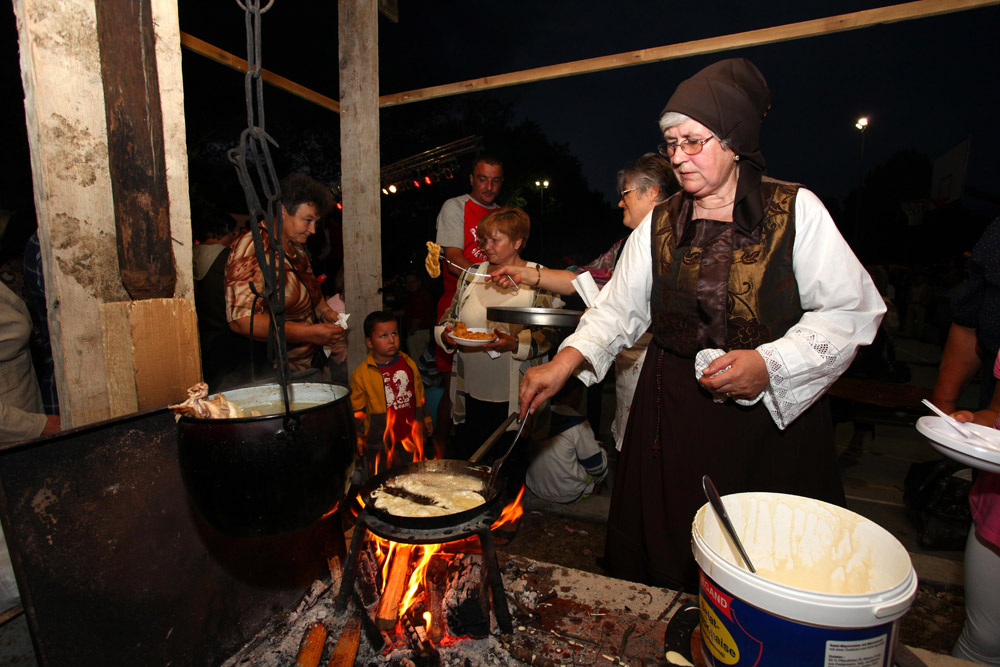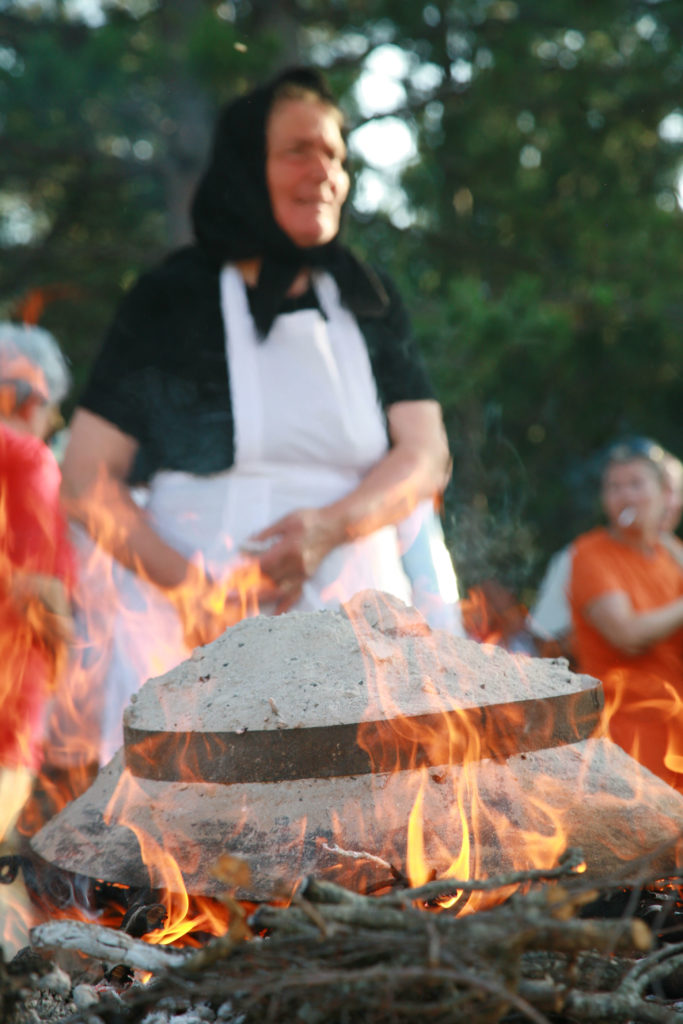The sun, citrus fruits, olive oil, fish and sea food. Of all these ingredients you get dishes that are appealing to the eye and delicious to your palates. They are the main part of Mediterranean diet – the healthiest diet in the world! And autochthonous dishes made in the area of Split-Dalmatia County are abundant with these ingredients! Its ideal geographic position reflects rich gastronomic offer of its cities and places. It is full of contrasts in which taste of past times blend with today’s creative cuisines and contemporary tastes.
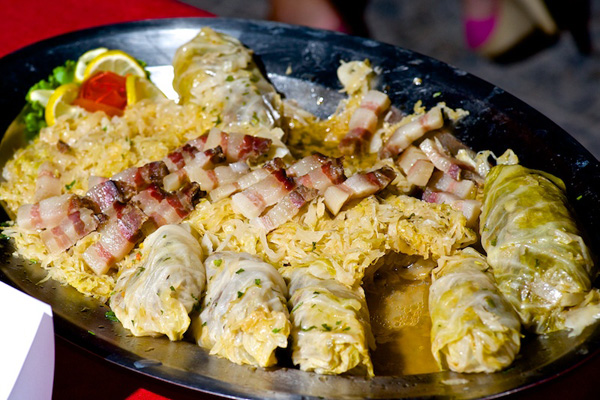
But, what stays the basis of every good Mediterranean dish, not common in any other diet are two grains of salt and the smell of fireplace. Each of these two grains of salt, brought by warm south or cold north wind, has its own story woven into autochthonous dishes…
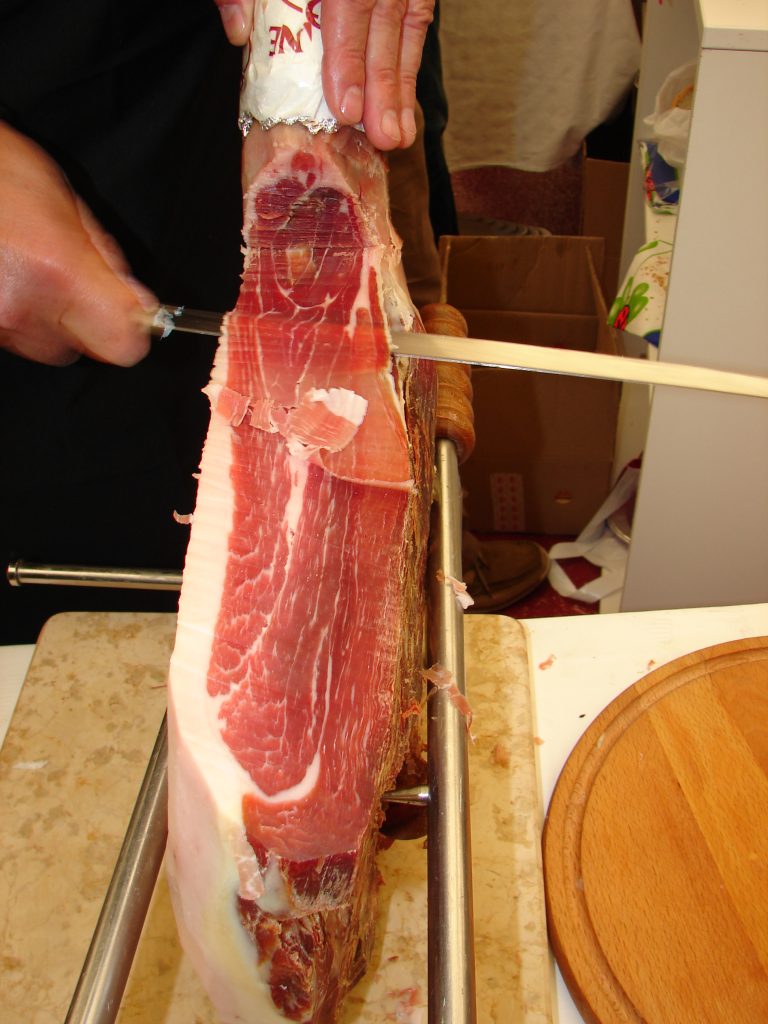
Frog legs stew and Cetina’s trout
Going thorugh Dalmatian hinterland and its beautiful landscape bordered by the River Cetina, you will find some of the dishes affected by the winds, but also the richness of natural and untouched rivers. The dish we strongly recommend is frogs stew on baškotin – lemon juice is poured over frog legs and they simmer on light fire with all the other ingredients. They can be served on baškotin, traditional type of hard sweet toast. If you wish to visit Trilj, then with already mentioned frog legs you should also try Cetina’s trout. This royal river fish with red dots on it body is becoming very rare in the Cetina River. It is most often prepared on grill, fried or cooked by people from Trilj and Cetina surrounding, and it is very tasty if it’s covered in corn flour and boiled. Only a few kilometres away, in famous Alkars’ Sinj you will be offered Sinj’s arambašići. These are cabbage rolls made in traditional way – minced beef or pork rolled in sour cabbage leaves and cooked on light fire.
Descending towards the sea you will come across coastal places in Split-Dalmatia County where every good host will offer you lamb bowel with fennel. This is actually lamb tripe, a specialty of coastal cuisine, made of lamb entrails noodles and potatoes, seasoned with garlic and spices. Fennel is the one that gives a special taste to his traditional dish.
In places of Split-Dalmatia County it is all about tasty and healthy food, so some of the traditional dishes in which locals, but guests as well, enjoy are koštradina – dried mutton, šalamaštrani tongue with capers or polestar – young rooster under the baking lid. Islands’ specialties are Vis’ and Komiža’s pie. In Komiža it is made with combination of salted sardines and tomato sauce with olive oil and parsley, all this wrapped in bread dough. After it is baked, it is cut into squares. And the most important thing…it blends perfectly with a glass of red wine! Vis’ pie is very similar, with salted sardines and onions sautéed on olive oil, only without tomato sauce.
Vis’ hib – former farmer’s pie – today’s top delicacy
As every dish ends with a delicious dessert, we end our story of autochthonous dishes with Imotski’s rafioli, traditional dessert made in every household in Imotski on special occasions and for holidays. This Dalmatian sweet is made of dough with walnut stuffing, dipped in brandy and sugar after it is baked.
But, this is not all! With prosecco and Makarska’s rafioli as a harmonious Mediterranean couple love was born on many occasions in warm, summer nights. What makes Makarska’s rafioli different from all other sweets is thin, crispy dough with walnut stuffing. For the choosy ones, there is also Makarana cake.

Just as Sacher cake is famous with Vienna people and their guests, so does Makarana lure with its Mediterranean magic. With all these delicacies, paprenjaci biscuits mustn’t be forgotten.

Their main ingredient is saffron, which was, together with honey and coriander, very important product on islands in 16th century. On the island of Vis you can sweeten your tooth with hib – former farmer’s pie made of figs, aromatic herbs, almonds and homemade brandy.



